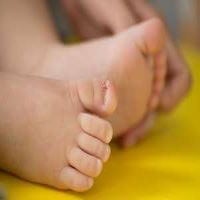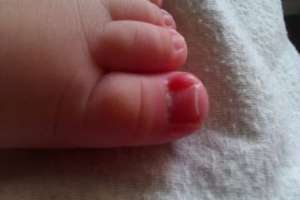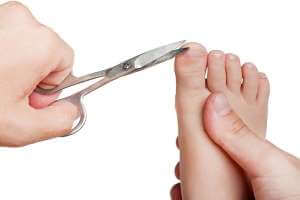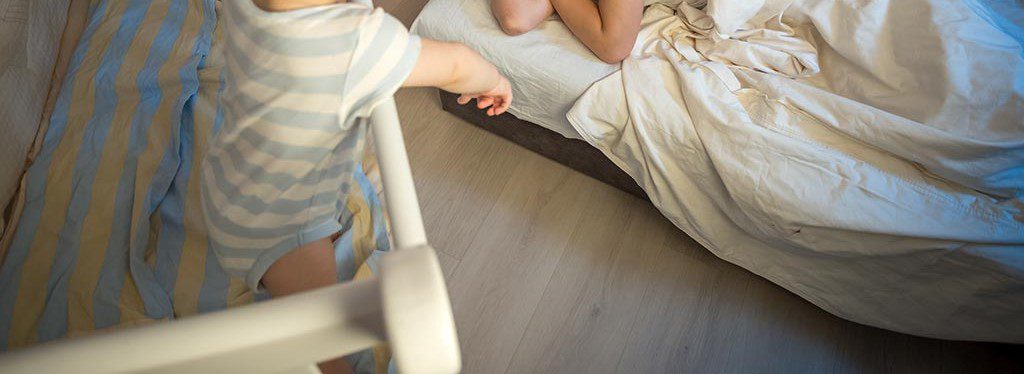An ingrown toenail is common in children. Your child's foot may appear slightly red or swollen near the toenail. Is this a sign of infection or something else? What you're seeing could be normal or could be an ingrown toenail.

Ingrown toenails in children: causes, symptoms, and treatment methods
This is a common occurrence for young children, and while it may seem painful, it's usually nothing to worry about as long as you treat it properly and watch for signs of infection. So, in the interest of keeping all young children happy and healthy, we're here to talk about ingrown toenails in children. Let's dive in.
Do you need: Cloth diapers, how to wash them, good washing and sterilization methods?
What is an ingrown nail?
Almost everyone will experience this condition at least once in their lifetime, and it's also fairly common in children. It occurs when the sides or corners of the nail grow in or press against the soft surrounding skin. It's especially common on the big toe, but any other toe can fall victim.
Does my child have an ingrown toenail?
Babies have flat, somewhat triangular nails at birth, and some have nails that curve downward. These conditions cause the skin around the nail to appear slightly higher and fuller than you would normally expect, making it appear bulging. This is sometimes called "infant toenails."
The way you'll know this is happening is if there are no signs of infection, no pain, and the baby feels fine! Ingrown nails can be quite painful, so signs of discomfort may be your first clue. Otherwise, you can quickly identify it by examining the top of the nail. During the early stages, the area will likely appear pink or swollen near the edge of the nail.
Do you need: Child running away from bed, how do I teach my child to sleep in his bed?
Some other signs of ingrown toenails to look out for include:
Raqqa: Pay attention to your child's reaction when you gently touch the area. Does he seem slightly uncomfortable? Or does he squeal when you touch near his toenails?

Pull his toes: If your baby is pulling on their toes, it could be another sign of pain and discomfort in the area, but this is likely only if accompanied by crying. Babies pull on their toes for many reasons, sometimes simply because they're nearby and easily accessible.
Grin: Young children may grimace whenever they feel pain. But if your child is older, he or she may limp or grimace while walking or crawling, if wearing socks or shoes, or when washing their baby's toes in the bath.
Change in skin color: The area around the toenail may appear pinker or redder than the surrounding skin. This can worsen from day to day, or it may remain the same.
Do you need: Bathing the baby, the guide and basic rules for caring for the newborn baby
Toenails can also be affected by ingrown toenails. In this case, you should look for signs such as:
Fluid-filled blisters: This is a warning sign of an ingrown toenail. It usually develops around the red areas where the skin meets the nail.
Discharge/pus: Clear fluid may sometimes be seen early in the infection due to the blisters breaking, but pus can develop later as the body fights off the bacteria.
Sometimes you won't see it unless you gently press on the area around it, but this will usually hurt if there is an infection there.
Redness and swelling: As the infection progresses and swelling increases, redness and pain increase. This is a very important sign of infection as the redness increases from inflammation, and you will be able to feel the skin becoming warmer as well.
Causes of ingrown toenails in children
- Toenails grow incredibly quickly, and that's one of the reasons why ingrown toenails appear. Toenails grow disproportionately. So, if your child wears tight socks or shoes, there's only one way the nail can grow—inwards.
- Some children's nails grow crooked simply due to genetics. The nails will naturally curve at the tip, causing pressure or growing inward.
- Another cause is improper nail clipping. It turns out that trimming your nails too short and cutting them too close to the skin can also contribute to ingrown toenails. The same applies to cutting them in a curved shape, as opposed to straight.
Unless you see signs of infection, there is no immediate need to rush to the pediatrician's office.

There are some simple steps you can try at home:
- First, to relieve your child's uncomfortable symptoms, doctors recommend filling a small tub with warm water. Add some mild soap and let your child (or just their feet) soak for 10 minutes.
- The best reason to soak in warm water is that it opens up the blood vessels that have been squeezed by swelling, allowing the body's natural killer cells to enter and clear the bacteria. It also helps loosen the skin around the softened nail, reducing pain and tenderness.
- Don't worry if your toenails appear red for a while after a warm soak; this is normal due to increased blood flow. Afterward, remove them from the bath and, if they aren't too painful, gently massage the area to encourage the toenails to move away.
- Pat the area dry before gently applying some over-the-counter antibiotic cream. It's a good idea to do this entire routine, especially the warm water soak, a few times a day until the area improves.
- One thing you should never attempt is "bathroom surgery." Trying to dig or cut the toenails can worsen the condition and may even increase the chance of infection. During this time, aid the healing process by having your child wear loose socks or shoes when outside.
- However, when you're home, let them walk or crawl barefoot as much as possible if the temperature allows. After a few days, you'll likely see improvement. However, if it doesn't start to improve or seems to worsen, consult your pediatrician.
protection
Here are some steps you can take to avoid ingrown toenails in children:
- Use nail clippers: Ditch the nail clippers and opt for clippers to trim your toenails. Clippers often cut nails too short.
- Curved or rounded, while clipping and trimming nails straight, the best time to do this is when your child is asleep.
- Trim nails often: The longer your toenails, the greater the chance of an ingrown nail.
- Trim nails regularly: Some may need to be trimmed once a week or more.
- Don't cut your nails too short: On the other hand, avoid cutting your toenails too close to the skin. If they're still short from a previous trim, simply leave them for a few more days.
- File the edges: Sharp edges can dig into the soft tissue of the toe. This is a good thing to do if your child isn't sleeping and you see an area that needs immediate attention. Unlike nail clipping, this is very easy to do while awake.
- Use loose shoes and socks: If your baby can't walk or crawl barefoot, or if the weather is too cold for them, opt for loose shoes. Tight socks and shoes can cramp the toes, potentially pushing the nails into the skin. For time at home, it's best to keep things natural and let those little toes breathe as much as possible.
You should always contact your pediatrician if the toenail doesn't improve within two days with home remedies. Another reason to take your child to the doctor is if you see signs of infection.
If you notice pain, increased redness and even lines forming on your toe, or blisters forming, you know it's time to see an expert.
The diagnosis
Your pediatrician will begin by examining the area and may prescribe oral or topical antibiotics if the area is already infected. In some cases, the doctor may trim the nail away from the skin, or remove part of it. In severe and recurrent cases, your child will likely be referred to a specialist.
Although it's not as common in children as it is in adults, a fair amount of them do. It's usually caused by improper nail trimming or tight socks and shoes.
Sometimes, genetics can play a role by causing toenails to grow in a curved shape. Fortunately, this usually resolves without medical intervention, and unless you see signs of infection, you can easily treat it at home. Has your child had ingrown toenails? Feel free to write about your experience below. And if you liked this article, please share it with your friends.
the source : How To Prevent Baby Ingrown Toenails










